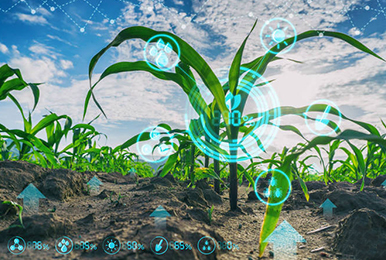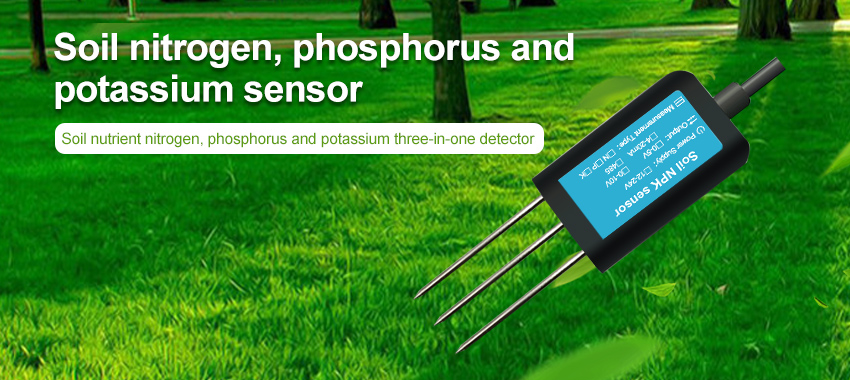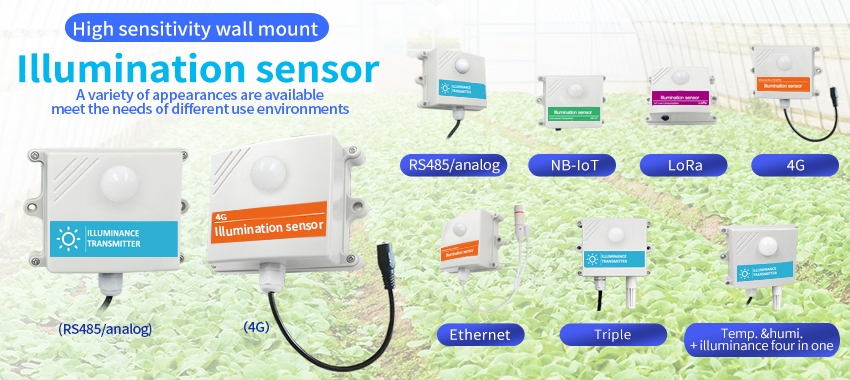Sensor:
A sensor is a device that can sense the measured information and transform it into an electrical signal or other required forms of information output according to a certain rule to meet the requirements of information transmission, processing, storage, display, recording, and control. With the development of the Internet of Things technology, sensors are gradually applied to more and more industries such as agriculture and industry.With the continuous development and improvement of Internet of Things technology, intelligent agricultural sensors have been widely concerned and valued by people.
In modern agriculture, sensors such as air temperature and humidity, soil moisture, soil pH, light intensity, and carbon dioxide are often used to collect data in all aspects of crop growth such as nursery, growth, and harvest. Agricultural conductivity and agricultural pH sensors are used to monitor water and fertilizer. The mixed fertilizer liquid in the integrated monitoring system is monitored.

soil moisture tester:
Soil moisture determines the water supply status of crops. Too high or too low soil moisture will affect the normal growth of crops above the ground. Only with suitable soil moisture, root water absorption and leaf transpiration can reach a balanced state, thereby promoting crop root growth. The JXCT soil moisture sensor measures the volume percentage of soil moisture by measuring the dielectric constant of the soil. The soil moisture tester method that meets the current international standards can directly and stably reflect the true moisture content of various soils.

Maintaining proper soil pH is the basic requirement for normal crop growth. When the JXCT soil pH sensor detects the electrode (sensor) directly contacts the soil, the current generated by the oxidation-reduction reaction in the chemical reaction is used, and the current value will drive the data of different pH value units corresponding to the ammeter, which is converted by the host. The results are displayed in the form of numerical values; the steel needle is a special anti-corrosion electrode made of special alloy material, which is resistant to acid and alkali corrosion. The shell is completely sealed with black flame-retardant epoxy resin, and the protection level is IP68.
Illumination sensor
The Illumination sensor includes three parts: transmitter, receiver, and a detection circuit. All of them are composed of electronic parts. It does not include mechanical working time. It can quickly monitor the light intensity of 0 to 200,000 Lux with a very short response time. The application of light sensor in greenhouse agricultural planting can help growers to accurately grasp the sunshine time law, light saturation point, and light compensation point of plant growth, and then adjust their light preferences through manual control technology to control and improve The scientific growth of crops in order to achieve high yields.
Crops continuously absorb CO2 in the atmosphere for photosynthesis and use photosynthesis to produce nutrients to maintain the development and growth of crops. Studies have found that when the concentration of atmospheric carbon dioxide increases, the photosynthesis of plants will be greatly enhanced. JXCT carbon dioxide sensor uses a new infrared verification technology to measure the CO2 concentration in the environment. The response is quick and sensitive, avoiding the life and long-term drift of traditional electrochemical sensors; the default measurement range is 0~5000ppm, with temperature compensation, which is affected by external Temperature influence is small.

Smart agricultural equipment
Agricultural soil conductivity and agricultural PH sensors are mainly used in agricultural monitoring with the water and fertilizer integrated machine system. They are mainly used to monitor the conductivity, pH, and temperature values of the fertilizer liquid after mixing and mixing, and display and upload to the water and fertilizer control system through the LCD screen.
The built-in memory chips of agricultural conductivity and agricultural PH sensors have storage functions, which can store historical data of 2 days and 3 days respectively, adopt high-precision AD conversion and single-chip micro-processing technology, and have multiple functions such as data acquisition and automatic temperature compensation.
Compared with modern agriculture, traditional agriculture, which relies on a lot of manpower and uses simple agricultural tools and machinery, has gradually shown its disadvantages. Modern agriculture uses the Internet of Things and sensor technology to provide accurate and timely crop growth data for formulating scientific planting programs, saving labor, optimizing crop varieties, and improving crop quality and yield.